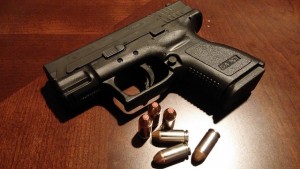 While the crime rate in Baltimore slightly decreased over the last year, violence in the city remains at an unacceptable level. So far in 2018 there have been 130 homicides within the city limit, and hundreds more non-fatal shootings. Just last weekend 5 people were killed and 7 more were shot in Baltimore, which lends credence to the fact that summer always brings a spike in crime to the area. Whether it’s the long days or the warm nights, people spend more time out on the streets during summer, and the streets are where the large majority of violent crimes occur. Baltimore Police has over 3,000 sworn police officers patrolling these streets, but the department has its limitations, especially in times of elevated violence.
While the crime rate in Baltimore slightly decreased over the last year, violence in the city remains at an unacceptable level. So far in 2018 there have been 130 homicides within the city limit, and hundreds more non-fatal shootings. Just last weekend 5 people were killed and 7 more were shot in Baltimore, which lends credence to the fact that summer always brings a spike in crime to the area. Whether it’s the long days or the warm nights, people spend more time out on the streets during summer, and the streets are where the large majority of violent crimes occur. Baltimore Police has over 3,000 sworn police officers patrolling these streets, but the department has its limitations, especially in times of elevated violence.
For the last few years federal law enforcement agencies have increased their presence in Baltimore, and this summer more than ever the feds plan to lend a hand in taking down the most violent of city criminals. The mayor and the police commissioner recently held a press conference announcing a “summer surge” of law enforcement collaboration designed to get ahead of the violence ushered in by the change in seasons. As expected the press conference did not provide specifics on which federal agencies would be involved and exactly how they would contribute, but the announcement did say that the “worst of the worst” would be the target. No federal agencies have made official statements regarding the collaboration, though the city’s DEA office did say a statement could be forthcoming and the U.S. Marshals Service reiterated their continued willingness to assist.
The collaboration hardly means that we will see uniformed FBI and DEA agents out on the streets of Baltimore. Rather, their involvement will likely be in the form of targeted investigations, arrests and prosecutions of the city’s most dangerous residents. The U.S. Attorney’s Office is already involved in the prosecution of gun crimes that would traditionally be handled in state court. Federal prosecutors routinely notify state prosecutors of their willingness to take over the prosecution of crimes such as possession of a firearm by a prohibited person under 18 U.S.C. 922(g) and the use of a firearm during a drug trafficking crime under 18 U.S.C. 924(g). Under state law the maximum penalty for possession of a firearm by a convicted felon is 15 years with a 5-year mandatory sentence if the prior conviction and resulting sentence was within the last 5 years. This same charge under federal law carries a 10-year mandatory sentence and a $250,000 fine. Under state law possession of a firearm during a drug trafficking crime carries a mandatory 5-year sentence with a maximum 20-year sentence, while under federal law this offense carries a maximum penalty of life imprisonment with a mandatory minimum 5 years consecutive to any other offense.
 Criminal Defense Lawyer Blog
Criminal Defense Lawyer Blog






